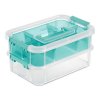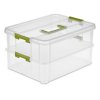Demi-human
maybe likes firearms a little bit…
No tracking, shoot until they split, rifle and pistol no difference
Depending on what cartridges you’re talking about, and where it splits, I’d say there is a HUGE difference...
No tracking, shoot until they split, rifle and pistol no difference
I agree. I’m religious about tracking my 375h&h brass. I don’t know if I’m being paranoid, but that’s a lot of powder, and the shape lends itself to a lot of brass flow. I was also very careful to track my 454casull brass. 65k psi in a handgun made me nervous to load for, even if it is perfectly safe. I sold it and have my .44nowDepending on what cartridges you’re talking about, and where it splits, I’d say there is a HUGE difference...
I do keep the ammunition separate that I shoot in my Lee Enfields and only neck size those. I mark the box with the rifle I used the ammunition in.
I’m religious about tracking my 375h&h brass.


I would color them all over with sharpie. Each sharpie color would designate a different amount of times reloaded. Looks stupid but easy to spot them.
I only shoot and load small quantities of centerfire ammo. I notch the rims of the cases with a Dremel tool for lot numbers. I have a code that will take me to ten lots. Each lot is recorded similar to Whughett's method. Once I start to get more than 10% case failures due to neck splitting, I discard the rest of the lot.
Actually, I color the primers with Sharpies to track loads when I’m doing ladders. It’s the best way to let my 5 y/o granddaughter “help”. I tried letting her pull the press handle, but 5 y/os don’t necessarily understand speed control. But coloring helps with developing her fine motor skills. While colored Sharpie tends to remain even after tumbling, most of it punches out with the spent primers.I would color them all over with sharpie. Each sharpie color would designate a different amount of times reloaded. Looks stupid but easy to spot them.


I would color them all over with sharpie. Each sharpie color would designate a different amount of times reloaded. Looks stupid but easy to spot them.
The sharpie doesn’t come off completely in the tumble, even wet tumbling. So coloring them over and over for the different load cycles wouldn’t work too well, I think.
